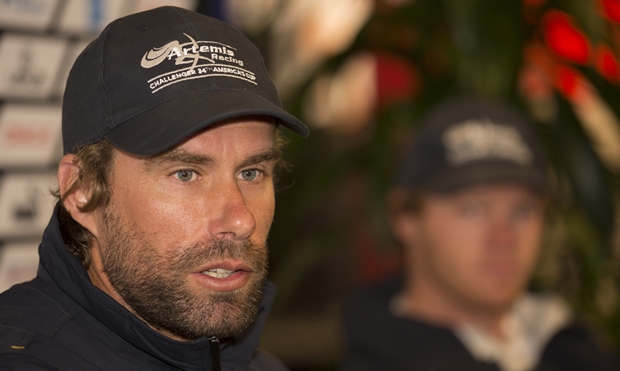
Iain Percy in the top job
Iain Percy has made the jump from British Olympic hero and triple medallist to running one of the most powerful America’s Cup teams in an impressively short period.
During his build-up to London 2012, Percy was sailing, when he was able to, with the Swedish Artemis Racing team as Terry Hutchinson’s tactician, but when Hutchinson left the team at the end of November 2012, he was bumped up to Sailing Team Director. Then in the latter stages of their campaign for the 34th America’s Cup, he became Team Manager, working alongside the team’s CEO Paul Cayard. With Cayard’s departure from the team, today he is effectively the CEO of Artemis Racing, although as Percy puts it “we didn’t like the term...”
Obviously the team as a whole, but in particular Percy, suffered a monumental and devastating blow when in May their first AC72 folded up and capsized, an incident during which Percy’s best friend and Olympic sailing partner Andrew Simpson drowned.
“It was really, really tough,” says Percy of how he and those surrounding him dealt with this tragedy. “Every situation you can normally make the best of it and find the positives, but there is nothing good to have come from this, there are no positives and life won’t be the same again for me and certainly not for his family.”
Percy admits that initially he contemplated throwing the towel in with the campaign, but then realised that there were another 100 or so personnel and their families working for Artemis Racing and it was important for everyone that the terrible accident was not the concluding moment for the campaign.
“It was hard for me, but I think it was the right thing for all the Artemis sailors and families and shore team, but it wasn’t easy. And Andrew would have wanted us to carry on because he would have cared about all the guys in the team and about the future of sailing and Artemis.
“What was amazing about Torbjörn [Törnqvist, Artemis Racing’s Team Principle], is that he also identified that the team needed to finish mentally, as I had. What we considered ‘finishing’ was sailing the boat on the city front, and even if we were still doing that two months after the Cup, he would have been willing to support that, which was an amazing commitment he made to the team.”
A significant issue was whether they would have the time to be able to revise their new AC72 structurally, in light of the failure of the first boat and then not only get it launched, but with enough time for the sailing team to get to grips with the new beast.
“In the end we got the boat out 10 days before [their first Louis Vuitton Cup race] and everything went brilliantly. The shore team had done such a good job that all the mechanical and hydraulic systems worked perfectly. That allowed us to sail every day and the improvements were such that we felt safe and competent to race, which we ultimately proved we were.”
Part of the reason Percy moved into the top role with the team, he says was because he felt obliged to take on a kind of ‘safety officer’ role for the team following Bart’s death. “I felt I had to be very sure of the processes that went into place with the boat before I was taking the responsibility to go out. I had to know the boat was 100% sound structurally and that we had done enough training. So in consultation with Nathan [Outteridge, helmsman] we knew we had to get to a certain level of competence, and ultimately I was going to be the one making the decision whether we had. But Paul [Cayard, CEO] was fine with that. He understood there were obvious reasons for that, so we worked in partnership for the last few months.”
So what were Percy’s thoughts about the 34th America’s Cup itself? “No one would have predicted that that was going to happen,” he says referring to Oracle Team USA’s historic come-from-behind victory from being 1-8 down against Emirates Team New Zealand.
“Going into the Cup, I thought Oracle was going to win by three or four points. They made that step. They had the windage package - obviously they didn’t have the cross beams [ie the diagonal beams going aft from the mast step that the Kiwi AC72 had] and that was going to give them a little edge upwind, which I thought would get them there.
“It was interesting how they developed their skimming and foiling upwind - TNZ’s hull was better placed for that until Oracle made a few changes and began sailing with even more lift on the foils and basically were low foiling. When you are footing and fast like that, it helped them to have the mid-leech up on the wing which allowed them to keep height. Suddenly their boat looked like the nicer one upwind. It was interesting how those things developed - Oracle argued that they should have got there a bit quicker, but when they did, there was no stopping them.”
Kyle Langford coming on to replace wing trimmer Dirk de Ridder, then Ben Ainslie replacing John Kostecki, plus the sailing team feeling more able to express their views (both on the boat and ashore), Percy believes gave Oracle Team USA the chance to revisit some of its sailing techniques and to make the significant changes that ultimately earned them a successful defence. In contrast, the Kiwis preferred to stick with their package, an approach which also came within a whisker of winning them the 34th America’s Cup.
“Undoubtedly it was the pace change, but it was brought about by a more open environment. I do put a lot down to Ben being on board, but also Kyle and Tom Slingsby being free to express themselves in terms of how they sailed the boat,” says Percy.
So how far does he feel they got up the learning curve with the AC72s? “It was a pretty steep part of the curve even in the last few weeks still. It was very impressive for all the teams. You never know what there is to do, and there’ll be more things we find. The boats will obviously be full foiling and full foiling tacking, which we weren’t quite at, depending on what they do with the rule. That is going to be another big gain.”
As to the boat that Oracle and the new Australian Challenger of Record come up with for the 35th America’s Cup, Percy says he believes it will be a Version 2 of the AC72 with some refinements and safety improvements. He is in favour of having some one design element to the new boat to reduce costs, but acknowledges that the America’s Cup should not go too far down this route as traditionally the event is as much a design and innovation competition as it is a boat race out on the water. “It needs to continue to be about design, otherwise we won’t see the inventions that we saw this time.”
While the foils and their control mechanisms are the areas of greatest development and under the America’s Cup Deed of Gift the hulls have to be built in the country from where each challenge emanates, the wing seems the most likely candidate to be one designed under the new Protocol. “The wing is a big part of the total build and design time, so that would be a good way to hit costs,” Percy acknowledges.
The big difference for the 35th America’s Cup is that there will be no more question marks over whether a big foiling wing-powered catamaran is the right tool for the job. “It proved to be such a success in the Final, it is almost a case of working together to find out together what is the best way to control costs and have more entries.”
Artemis Racing’s Team Principle Torbjörn Törnqvist seems as enthusiastic as ever to win the America’s Cup. Previously we have wondered about the Geneva-based Swede’s motivation for challenging, seeing as to date in all his other sailing, his main enjoyment has been being on board and steering himself.
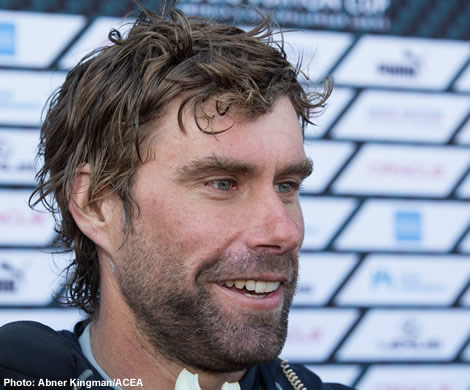
Percy believes Tornqvist has “got the bug” to win the biggest trophy in sailing. “Plus he is in a position to do it financially and is passionate about supporting the event and the sport. Actually sailing in the America’s Cup is maybe a smaller part of the challenge than in other parts of the sport - after three years of training, with the sailing part you get to being as good as you can be and then it comes down to the technology and that in turn comes from the management of the program and how it all interacts.
“It’s like me - I have done a lot of helming, but I am not worried if I am helming the boat or doing tactics or strategy. What interests me is these boats, the technology and the management behind that, because the technology doesn’t just appear 'like that', you have to create the environment and have the right people. So he is very involved with all that and will be more so this time.”
So in a shocking development to his career, Percy is finding that in his new role he is actually making use of his economics degree from Bristol University, where he also studied organisation structures. “It’s a tough challenge, but I’ve had a few over the past few years, it excites me and I don’t shy away from responsibility. I just try and work very collaboratively with little hierarchy. The traditional model of the senior skipper of the boat doesn’t particularly work with the level of creativity that you need with these boats. You need to look at some of the modern hi-tech companies and creative industries, like Pixar, which we went to visit when we were there, and the way they work isn’t in the traditional old industry hierarchical way. I find that interesting and it makes a big difference in the long run. You have to get that cocktail very right.”
Obviously one downside of having such a deep involvement with Artemis Racing is that it means that Percy won’t be part of the British campaign for the America’s Cup that his close friend Ben Ainslie is currently attempting to get off the ground. “I hope he manages it - it would be absolutely great,” says Percy. “But it is hard, because you need to be able to make decent early decisions based on the knowledge that the whole project is underwritten. But Ben is totally aware of that. He won’t want to mount a challenge that can’t be successful.”
There is no chance of Percy joining him? “Over the last few months with TT [Torbjörn Törnqvist] we have been through a lot together and I feel a real loyalty to him and I enjoy my time at Artemis.”
While at present the sailing world awaits to hear about the all-important Protocol for the 35th America’s Cup (due to be announced next spring) it seems that 2014 is likely to be a relatively quiet year on the AC front. There is a good possibility that the AC45 fleet will be upgraded to become foil-born and Percy hopes (although we have heard it is unlikely to happen) that there will be some racing for the AC45s in San Francisco next year. “You need a windy venue, as it doesn’t scale quite as well - it needs more wind to take off,” he says of the 45s with their new foils. “You could scale it, but you’d need bigger boards and then they wouldn’t be that much quicker. But if we raced in San Francisco and did a couple of events there, that would be great.”
So Cup teams are looking at other avenues in sailing to keep them occupied in 2014. Several teams (including Ben Ainslie Racing) are looking to compete in the Extreme Sailing Series in 2014 and Percy confirms that Artemis Racing will definitely continue with the RC44 circuit. “Keep current and race sharp is vitally important, so I’ll be racing because that’s the best thing for our America’s Cup campaign...and also it will be good fun.”
If they do anything beyond this, it will depend on the type of boat, the team make-up, etc for the 35th AC, when these factors are revealed in the Protocol.

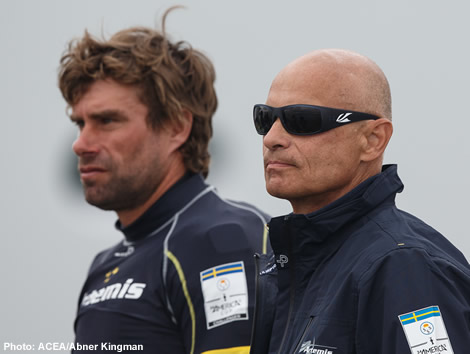
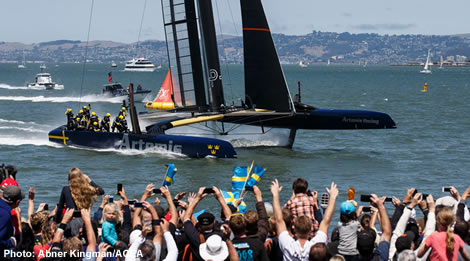
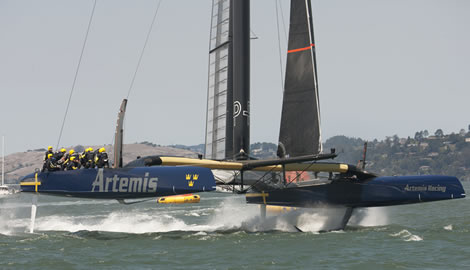
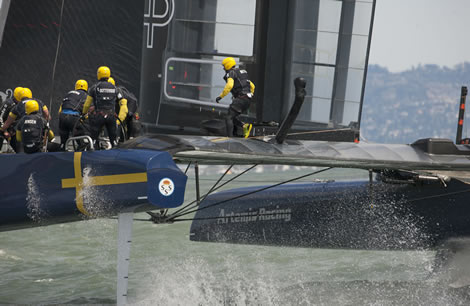
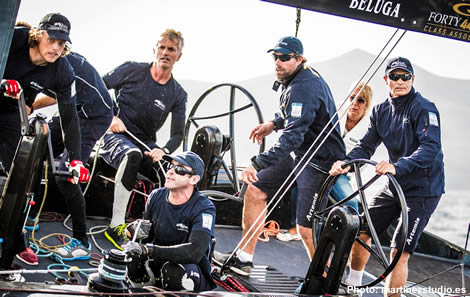







Latest Comments
Add a comment - Members log in